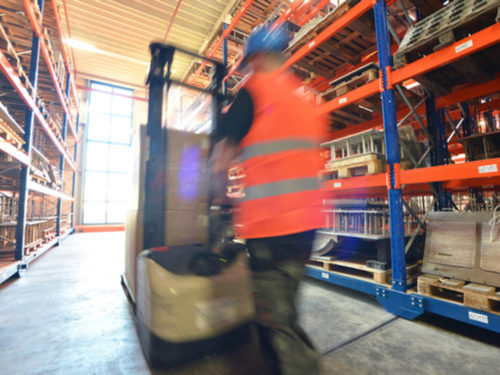
Think Tank
How Digital Payments Improve Logistics Efficiency

The logistics industry is about speed, efficiency and accuracy. Warehouses strive to turn trucks around swiftly, keep the dock doors filled, and process as many loads as possible. The same goes for truck drivers and carriers – if they’re not on the road, they’re not generating revenue.
But in a space where speed and efficiency are so important, the industry is overly reliant on something that is incredibly inefficient – paper.
Paper is at odds with the goals of efficiency and accuracy. It’s cumbersome and slows down entire processes. Paper payments can mean warehouse clerk sitting on the phone for 15 minutes to verify a check, or scrambling around the warehouse looking for change. Every paper transaction means precious time wasted, with the possibility of payments being lost or mishandled.
Logistics businesses large and small are tracking payments and charging orders mostly manually, sometimes even with pen and paper. This is particularly common in areas of the business where charges can be unexpected or highly variable. In the warehouse environment, for example, accessorial fees can be charged based on how a load arrives. Was it late? Did it require special handling or unloading fees? Even warehouses supported by great technology might not have the systems or processes to properly assess, track, and handle these fees, to ensure that they get collected in real time or billed later.
Another problem posed by paper is when a payment is expected in real time but the driver doesn’t have an accepted form of payment, such as a paper check or cash. The driver is then forced to spend time finding the accepted method of payment. Imagine everyone in the grocery store paying by check or having to pay with cash every time you fill your car with gas. That’s happening every day in some corners of the logistics industry.
Digitizing the tracking, invoicing, and collection of payments greatly improves the payment experience for both sides of the transaction. It’s easier to collect, more payments options can be supported, and there isn’t a paper invoice or receipt to lose.
Transitioning to digital payments and workflow not only speeds up day-to-day operations, it lightens employee loads and ensures that every important detail is accounted for throughout the supply chain. A move to digital payments is more than just getting rid of the hassle of checks ; it reduces reliance on paper overall. That includes paper invoices, manual data entry, storing old paper records and reducing touchpoints that create opportunities for human error or even theft.
The logistics industry isn’t alone in its reliance on paper invoicing and payments. A 2018 webinar from PYMNTS.com entitled “Bringing Corporate Payments Out of the Dark Ages” detailed some of the trends in B2B payments:
• 67% of consumer payments are made electronically, while 64% of B2B payments are still done by check.
• B2B payments have an 18% error rate.
• The average B2B invoice takes $17 and 10 days to process.
• The entire lifecycle of a B2B transaction is 34 days in the U.S.
The minimal cost in transitioning to digital payments is easily recouped by the ROI that comes from speed, efficiency, accuracy and eliminating revenue leaks. Don’t be left in the dark: evaluate your payment and invoicing processes to ensure they have the visibility and efficiency you need to best run your businesses.
Robin Gregg is CEO of RoadSync, a digital payments platform for logistics.






